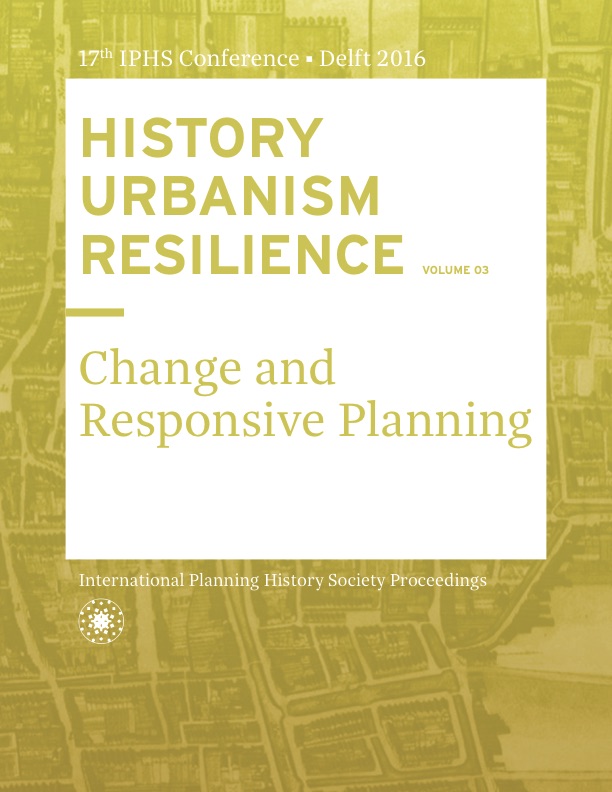Food public markets as cultural capital: Girona province
DOI:
https://doi.org/10.7480/iphs.2016.3.1253Abstract
The role of public market halls in European cities has been analysed from several perspectives: as specific places for feeding the city; as public services; as the first public places built specifically for women; as places to control health and taxes on food; as places where the urban-rural relationship can be articulated; as places to control citizens’ behaviour, or as places providing local trade within a structure. There are fewer studies exploring public food markets as cultural and social capital with a view to improving the local and new-endogenous economy, an economy which not only involves the environment, but also the sociality linked to the tradition of food production. Research on public markets in small provincial towns is scarce, particularly the role they play in maintaining the urban-rural relationship by providing a local food supply, and also in constructing the rural landscape. This case study concerns the province of Girona and its nine public markets halls. The aim of the study is to explore their role as a public service within the territory and the agricultural landscape, the communication system, the local gastronomic culture and economic culture, this apparently being more resilient and stable than the economy of scale.References
Appadurai, Arijun. Modernity at Large. Cultural Dimensions of Globalization, 178-182. Minesota: University of Minnesota Press, 1996.
Burgueño, Jesús. “Una enquesta de la Mancomunitat sobre les comarques naturals (1917)”. In Treballs de la Societat Catalana de Geografia 76, 261-287, 2013.
Burgueño, Jesús. Història de la divisió comarcal. Lleida: Raffael Dalmau, 2003.
Casassas i Simó, Lluís. Fires i mercats a Catalunya. Barcelona: Edicions 62, 1978.
Col•legi d’Arquitectes de Catalunya, ed. Debat Costa Brava Congrés: un futur sostenible. Girona: Col•legi d’Arquitectes de Catalunya, Demarcació de Girona, 2005.
Deloitte. The food value chain. A challenge for the next century. London: The Creative Studio at Deloitte, 2013.
Fava, Nadia, Guàrdia, Manuel and Oyón, José Luis. “Public versus Private: Barcelona’s Market Halls System, 1868-1975”. In Planning Perspective 25, 5-27, 2010.
Garcia-Fuentes, José Maria; Guàrdia-Bassols, Manel and Oyón-Bañales, José Luis. “Reinventing Edible Identities: Catalan Cuisine and Barcelona’s Market Halls.” In Edible Identities: Exploring Food as Cultural Heritage, edited by Ronda Brulotte et al., 159-174. Surrey: Ashgate, 2014.
Guàrdia-Bassols, Manuel and Oyón-Bañales, José Luis, ed. Making Cities through Market Halls: Europe, 19th and 20th Centuries. Barcelona: Museu d’Historia de Catalunya de Barcelona, 2010.
Lash, Scott and Urry, John. Economies of Signs and Space. London: Sage, 1994.
Lasuén, José Ramon. Ciutats. Plan Estratégico del Área Metropolitana de Barcelona, 2007.
Magnaghi, Alberto. Il progetto locale, verso la cosienza del luogo. Torino: Bollati Boringhieri, 2000.
Miller, Monserrat. Feeding Barcelona, 1714-1975, Public Market Halls, Social Networks, and Consumer Culture. Luisana: Baton Rouge, Louisiana State University Press, 2015.
Nogué, Joan and Vicente, Joan. “Landscape and national identity in Catalonia.” In Political Geography 23, 113–132, 2004..
Ray, Christopher. Culture Economies: a perspective on local rural development in Europe. Newcastle upon Tyne: Centre for Rural Economy, Dept. of Agricultural Economics and Food Marketing, University of Newcastle upon Tyne, 2001.
Salmerón i Bosch, Carles. El Tramvia del Baix Empordà: història del ferrocarril Palamós-Girona-Banyoles. Girona: Edició d’autor, 1985.

